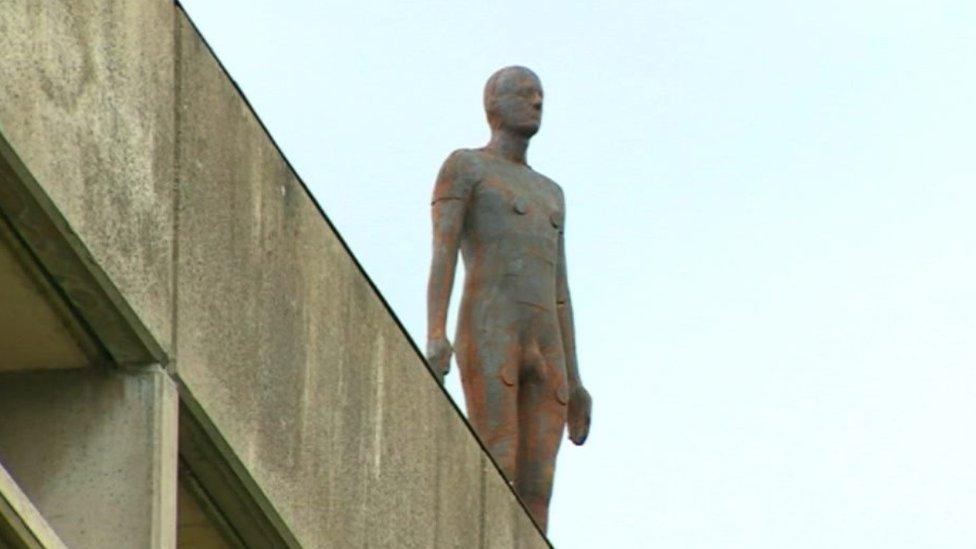UEA art installation 'nothing to do with suicide', Gormley
- Published

International sculptor, Antony Gormley alongside one of his cast iron figures which are modelled on his own body
Acclaimed sculptor Antony Gormley has defended criticisms of his latest installation featuring life-size human statues on top of university buildings.
Some students at the University of East Anglia (UEA) in Norwich claimed the figures resemble people contemplating jumping off.
But Gormley said all art should be "unsettling" and his work was "nothing to do with suicide".
The work is part of a sculpture park being created on the campus.
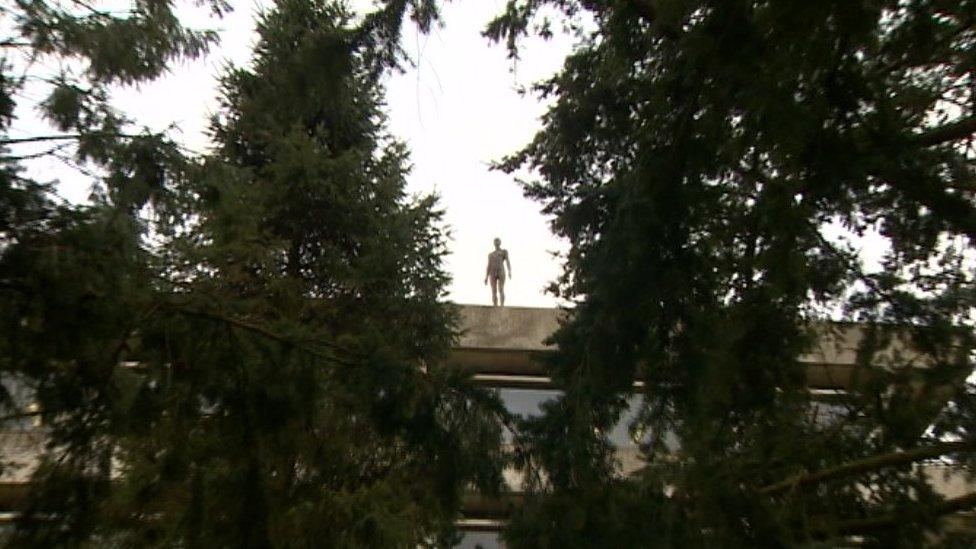
The human figures are part of art project featuring three Gormley sculptures
One student said: "I really did think it was someone who was going to jump off a building."
Gormley is one the UK's leading artists and is probably best known for his Angel of the North.
In defending the UEA installation, he said: "These works are nothing to do with suicide, they're actually to do with life and they're placed on the skyline in a way to make us think about space and distance.
"Universities are places where people spend a lot of time thinking about the thoughts of others,
"I think it's a wonderful place to balance that intellectual life with an object that is silent, it doesn't need to be read. It has to be felt, it has to be lived with," he added.
Calvin Winner of the Sainsbury Centre for Visual Arts, which created the art trail, told the BBC: "Part of campus life is about debate and I would have been disappointed if there had been none."
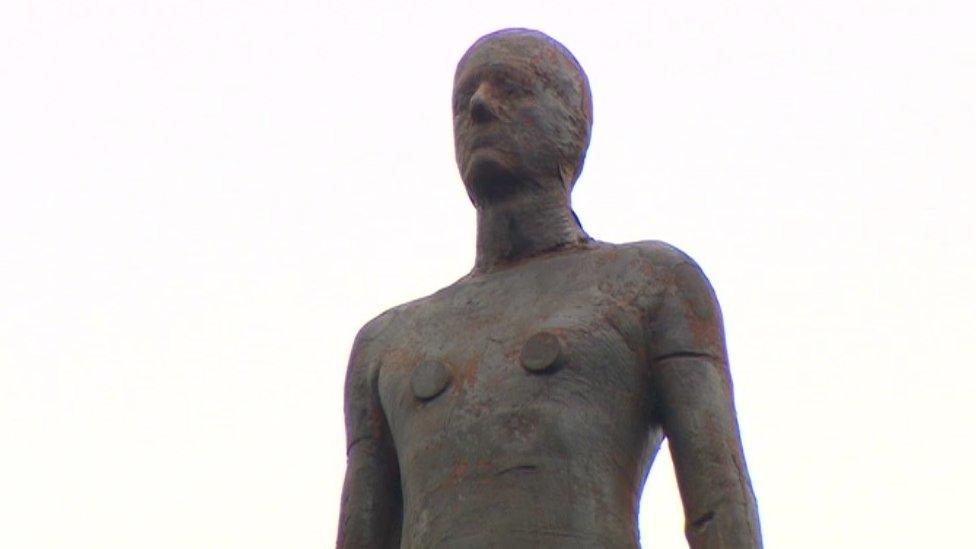
The figures are part of a plan to create a sculpture trail at the UEA campus
The Event Horizon, external work, which is a touring exhibition, also provoked fearful reactions when it displayed in New York, external and London.
Normally shown in cities, Gormley said he chose to display the work at the UEA because of its Brutalist concrete architecture in natural surroundings.
"It shows how human made things can co-exist with the elemental world," he added.
The sculptures will remain at the UEA for five years.
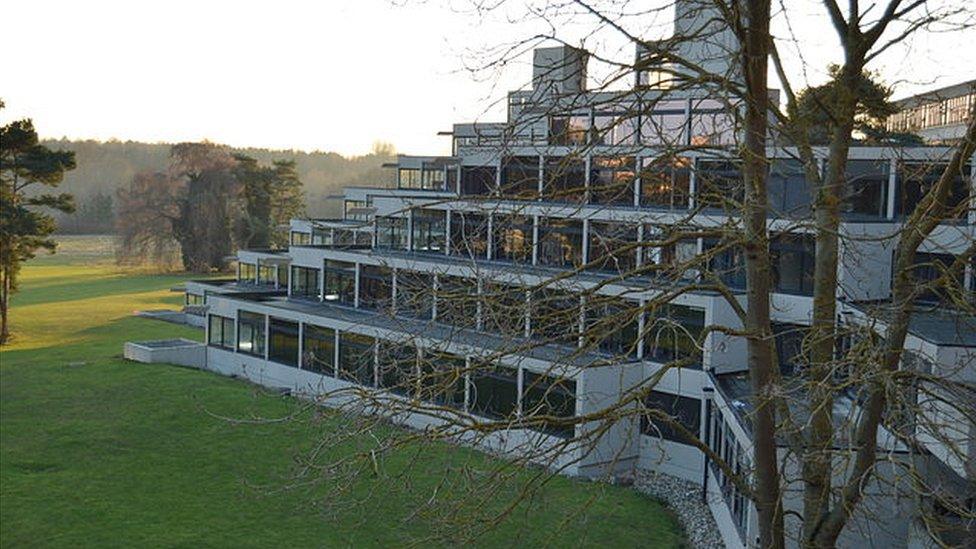
Gormley described the UEA's grade II listed Ziggurat student halls like a "beehive of young creative minds"
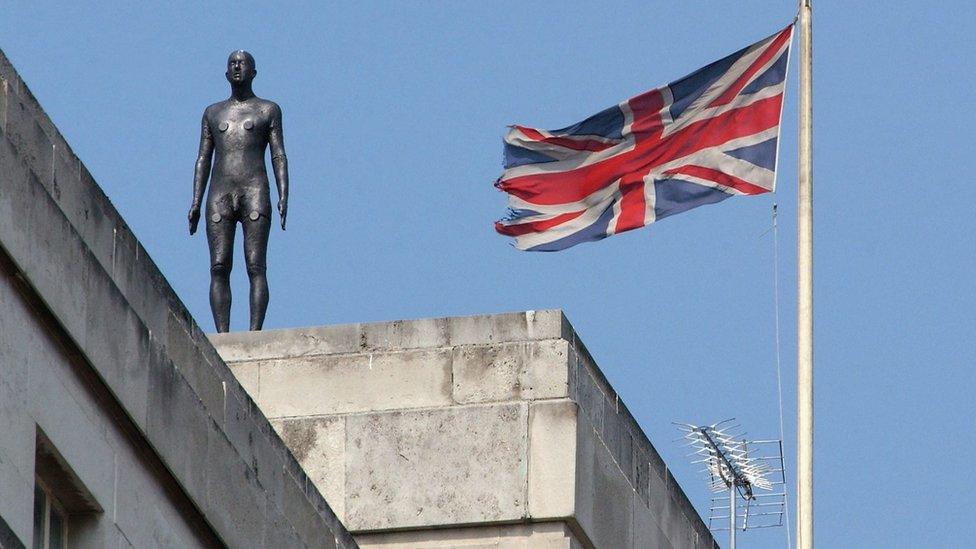
Human figures on the edge of buildings featured in Gormley's show Event Horizon which has toured the world
- Published14 April 2017
